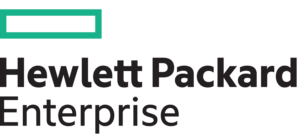With over 200,000 users worldwide, it’s safe to say that PRTG is a well-known (and we’d even say well-loved) network monitoring tool. But as well-known as it is, people might still only think of it in terms of traditional IT environments. In fact, PRTG is actually also really well-suited to other environments, too. One of these is healthcare IT.
In recent years, connected medical devices and the digital transfer of patient data have resulted in medical technology and traditional IT infrastructure becoming more integrated. This results in a new kind of infrastructure, consisting of normal IT (the network, routers, servers, switches, and so on) as well as medical IT (digital imaging devices, communication servers, and more). We know that PRTG handles the traditional IT environment very well. But what about this new integrated environment?
Spoiler: PRTG is very capable when it comes to monitoring healthcare IT. Of course I would say that. But here are 6 reasons that back up my statement.
1. Sensors for “Traditional” IT
Medical systems like Radiology Information Systems, Laboratory Information Systems, and Hospital Information Systems run on networks. The devices, databases, servers, and other elements can be monitored using regular PRTG functionality. So that’s taken care of.
2. Sensors Specifically for Healthcare Protocols
The healthcare industry has established protocols for transferring information. Two commonly used protocols are Digital Imaging and Communications in Medicine (DICOM) and HL7. DICOM is used to transfer and manage medical imaging information, while HL7 is used to transfer clinical and administrative data between medical applications. By monitoring what happens with data sent using these two protocols, it’s possible to get a good picture of what is going on in the network.
PRTG offers out-of-the-box sensors specifically for monitoring DICOM and HL7 protocols. Here’s what kind of information you can get:
- DICOM
- PRTG provides three DICOM sensors. The DICOM Bandwidth Sensor can be used to test if a DICOM device can handle a C-ST
 ORE request. It returns the bandwidth used for sending the test files, the response time of the C-STORE request, and the total size of the sent files.
ORE request. It returns the bandwidth used for sending the test files, the response time of the C-STORE request, and the total size of the sent files.- The DICOM C-ECHO Sensor checks that a DICOM handshake is executed by the target system. It returns the minimum, maximum, and average C-ECHO response times.
- Finally, the DICOM Query/Retrieve Sensor sends a C-FIND request or Modality Worklist (WML) query to a target device and counts the items. It returns the minimum, maximum, and average time between two responses, the total communication time, the total number of found items, and the number of found items by field.
- HL7
- The HL7 sensor monitors the availability of HL7 interfaces. The sensor returns the Acknowledgement (ACK) status, message control ID status, and response time. You can use this sensor to keep an eye on the interfaces of the Radiology Information System (RIS), Laboratory Information System (LIS), and Hospital Information System (HIS), for example.
3. Monitor the Communication Server
Typical healthcare infrastructure has a communication server acting as a hub between all other systems. These servers generally offer a RESTful API. This means you can use the REST Custom Sensor of PRTG to monitor things like message flow for each interface between the communication server and other systems.
4. Business Process Sensor For an Overview
The Business Process Sensor in PRTG can be used to show you the summary of an entire business processes, while monitoring several process components. For the healthcare environment, this means you can display an overall summary that covers many underlying systems, such as PACS, RIS, LIS, HIS, and so on, all on one screen. Or you can choose to show a summary for a specific business process, like radiology, in which case the summary will cover RIS and its interfaces to the Communication Server.
5. Digital Medical Devices Can Also be Monitored
Digitization of medical devices means that imaging devices, such as CT and MRI machines, are now connected to the network and communicating with storage servers and communication hubs. But, unlike other IoT devices, they cannot be monitored using standard protocols like SNMP, NetFlow, and so on. However, you can monitor these devices using the DICOM and HL7 sensors of PRTG.
6. Everything Monitored in One Place
The final benefit I’d like to mention is the fact that you can have the metrics from your entire infrastructure – whether they’re digital medical devices, storage devices, servers, routers, you name it – on one screen. This way you get a reading of your healthcare infrastructure’s health at a glance, despite the fact that you have many disparate technologies and devices in your network.





